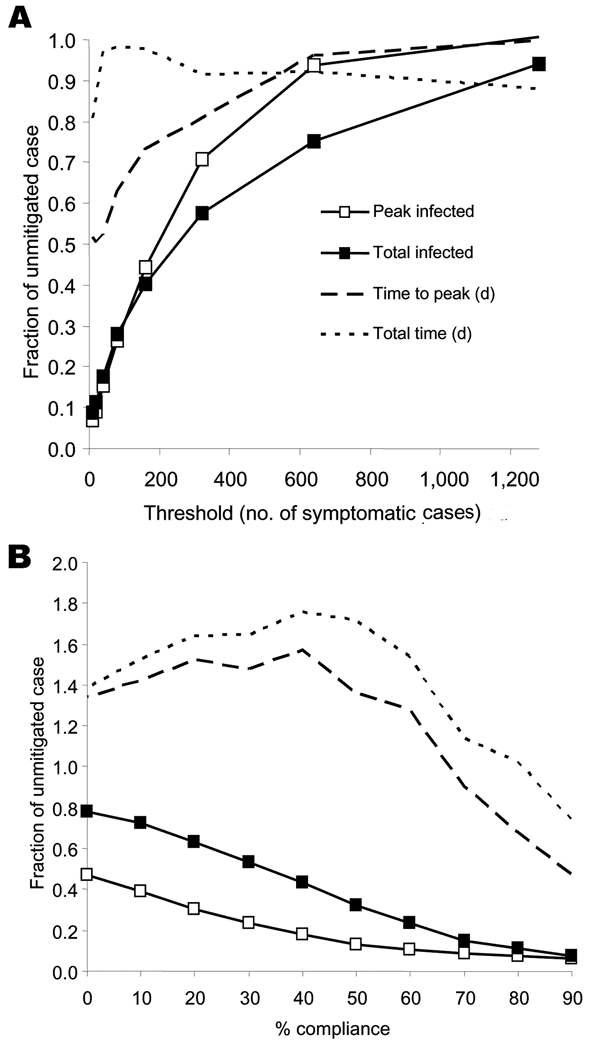Volume 12, Number 11—November 2006
Research
Targeted Social Distancing Designs for Pandemic Influenza
Figure 7

Figure 7. Fraction of unmitigated base case attack rate for targeted social distancing of children and teenagers as a function of A) implementation policy threshold given by the number of symptomatic cases (compliance at 90%) and B) compliance with staying at home (implementation policy threshold at 10 symptomatic cases, 0% compliance closes schools alone). Each point represents the average of simulations of 100 that yielded epidemics (>100 infected). Standard deviations for variation of threshold are <3% of the total population. However, for compliance variation, standard deviations increase to a maximum of 7% of the total population at a compliance of 30%.
Page created: October 14, 2011
Page updated: October 14, 2011
Page reviewed: October 14, 2011
The conclusions, findings, and opinions expressed by authors contributing to this journal do not necessarily reflect the official position of the U.S. Department of Health and Human Services, the Public Health Service, the Centers for Disease Control and Prevention, or the authors' affiliated institutions. Use of trade names is for identification only and does not imply endorsement by any of the groups named above.